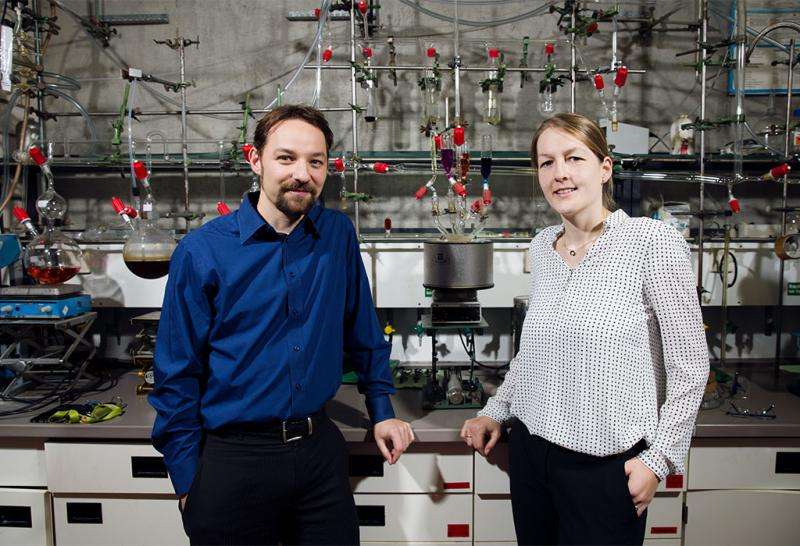Intelligent synthetic materials that respond to external stimuli

Two research groups at TU Darmstadt are developing intelligent synthetic materials that respond to external stimuli. Nature is the teacher.
Synthetic materials are usually static. They do not switch back and forth between different structures as conditions change, as some organic materials do. Switchable polymers that respond to light, pressure, temperature or other chemical or physical stimuli and change their properties, would be interesting for many applications, especially smart filters and sensors.
No less than two research groups are working on this topic at TU Darmstadt. Assistant Professor Dr. Annette Andrieu-Brunsen from the Chemistry department makes the nanometre-sized pores of a ceramic membrane functional with ultra-thin layers of switchable polymers, which she uses to control the transport of ions and tiny molecules.
She initiates polymerisation in the tiny pores and employs different detection methods to check for the correct result. She wants to know how the responses in the tiny pores have to be controlled and restricted to achieve the required transport. Depending on how the pores are made functional, the molecules will then no longer be filtered just by size, but also by the properties assigned by the switchable polymer.
Andrieu-Brunsen works with pores in the mid nanometre range, socalled mesopores. She uses light, redox reactions and other stimuli to switch them. She takes her inspiration from organic membranes. They transport ions and molecules selectively in one direction and if necessary, also actively by supplying energy. "We ask ourselves, what is the best way to implement these three transport parameters using our synthesis concepts for the porous, ceramic membranes that we have made functional", says the Assistant Professor. "However, we know that organic membranes will always be quite a bit ahead of us".
Dr Markus Gallei, the Head of the Early Career Research Group at the Ernst-Berl-Institute for Technical and Macromolecular Chemistry, adopts a different approach. He turns to switchable polymers and allows photonic crystals and porous membranes to be produced by self-organisation. Gallei determines the switchable properties of the crystals and membranes by his choice of source materials. His lattice structures and pores are between 50 and 600 nanometres in size.
He uses his porous materials to detect or filter molecules and molecular substances in this magnitude. Gallei uses source products that are robust and scalable, so that the intelligent material can also be made on an industrial scale, if required. There is an important reason why he is turning to photonic crystals. "The colours of the photonic crystals are structural colours and are caused by the reflection of light, not by absorption, as is the case with pigments", says the Head of the Early Career Research Group. "They are the colours of butterfly wings, peacock feathers and opals. If the structure of the crystal is altered by a change in temperature, a voltage, a magnetic field or other stimulus, the crystal reflects a different wavelength.
So when a photonic crystal switches, it is immediately obvious with the naked eye, because the colour changes." The technology platform of Andrieu-Brunsen could be used for the detection and removal of heavy metal ions, Gallei's platform lends itself to the detection and removal of impurities from drinking water and to optical security features. These are just two examples of the many potential uses.
Provided by Technische Universitat Darmstadt



















